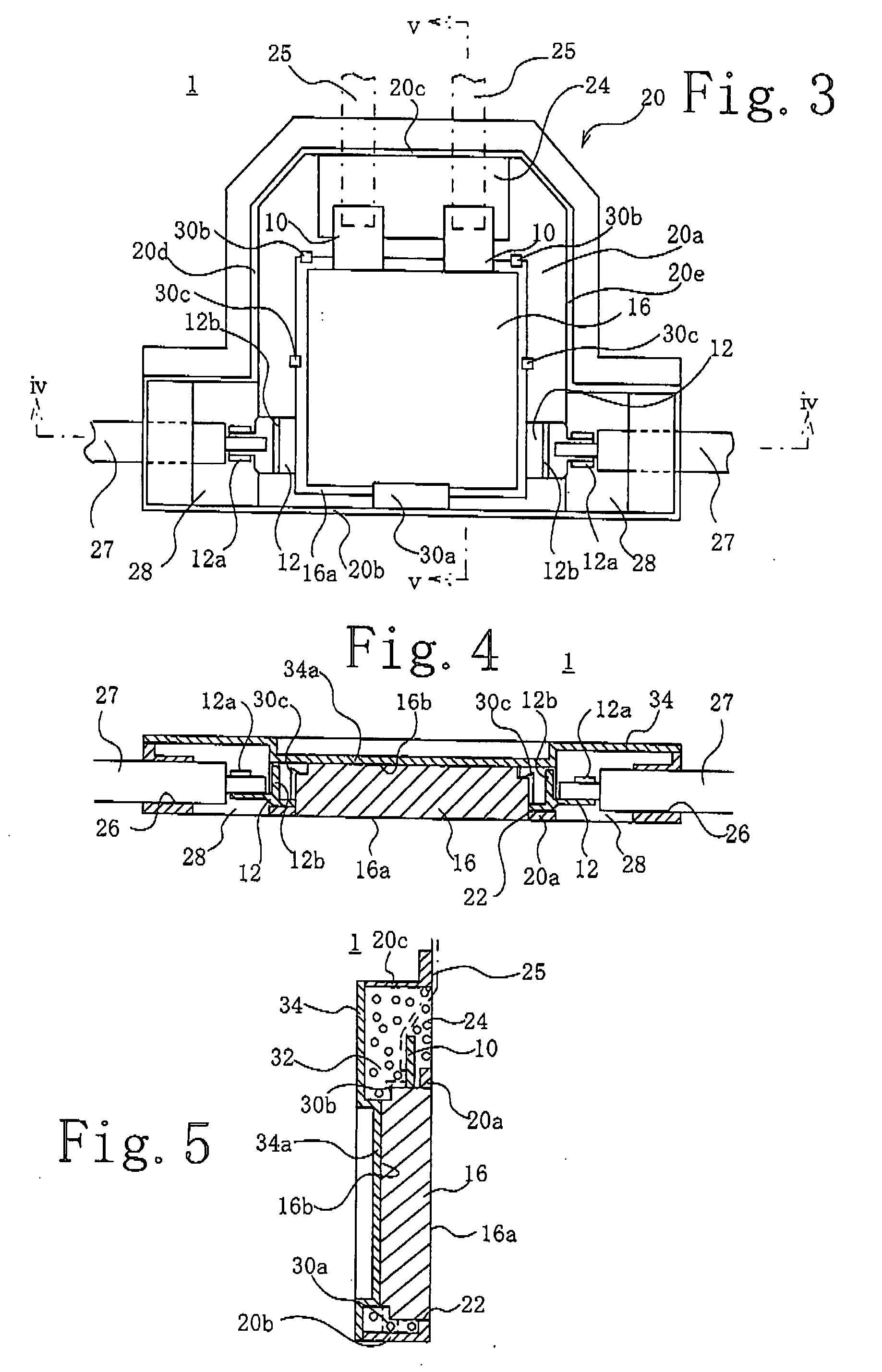Solar Cell Module Connector
a solar cell and module technology, applied in the direction of coupling device connection, radiation control device, pv power plant, etc., can solve the problem that the generated heat cannot be dissipated sufficiently, and achieve the effect of improving reliability and high productivity
- Summary
- Abstract
- Description
- Claims
- Application Information
AI Technical Summary
Benefits of technology
Problems solved by technology
Method used
Image
Examples
first embodiment
[0017] A solar cell module connector 1 according to the present invention includes a diode module 2 like the one shown in FIG. 1. The diode module 2 has plural, e.g. two, heat dissipating plates 4a and 4b. The heat dissipating plates 4a and 4b are rectangular metal plates having a thickness of 1 mm or more, and are spaced from each other with their longer side disposed in parallel, with a spatial insulation gap G disposed between them. A bypass diode, e.g. a thin plate diode chip 6, has its anode 6A soldered to the surface of the heat dissipating plate 4b. The diode chip 6 has its cathode 6C connected to the surface of the heat dissipating plate 4a via a connecting conductor 8. Slits may be desirably formed to surround the four corners of the anode of the diode chip 6. The slits are useful in positioning the diode chip 6 in place and in dispersing thermal stress caused by heat generated by the diode chip 6.
[0018] Terminals 10 for connection to solar cell module leads are formed to e...
second embodiment
[0032] Adjacent two of the terminals 100 of the connector 1a are adapted to be connected to the respective ends of each of three serially connected solar cell modules (not shown), whereby each of the three solar cell modules is connected in parallel with an individual one of the diode chips 60a-60c. The heat dissipating plates 40a-40d of the connector 1a are formed to have the same size, but no diode chip is disposed on the heat dissipating plate 40a, and, therefore, the amounts of heat dissipated through the heat dissipating plates 40a-40d are not equal. Accordingly, it is desirable to form the heat dissipating plates in such a manner that the heat dissipating plate with a diode mounted thereon, which can dissipate least heat into the surroundings and, therefore, would become hot if no measures are taken against it, has the largest width, the heat dissipating plates with a diode mounted thereon which can dissipate more heat into the surroundings have successively smaller widths, a...
PUM
 Login to View More
Login to View More Abstract
Description
Claims
Application Information
 Login to View More
Login to View More - R&D
- Intellectual Property
- Life Sciences
- Materials
- Tech Scout
- Unparalleled Data Quality
- Higher Quality Content
- 60% Fewer Hallucinations
Browse by: Latest US Patents, China's latest patents, Technical Efficacy Thesaurus, Application Domain, Technology Topic, Popular Technical Reports.
© 2025 PatSnap. All rights reserved.Legal|Privacy policy|Modern Slavery Act Transparency Statement|Sitemap|About US| Contact US: help@patsnap.com



